Animal pests can decimate a vegetable garden or orchard in little time. It is important to identify the culprit and take action quickly. A combination of controls is likely to be more effective than any single one.
Good Products to Control Animal Pests at Amazon:
- Live Trap for Large Garden Pest Animals
- Electric Fence/Netting for Garden Protection
- Garlic Barrier Spray to Repel Animals
- Scarecrow Fake Owl for Garden Protection
- Motion Activated Sprinkler to Deter Animals
Here are natural, organic, humane controls for animal pests in the garden:
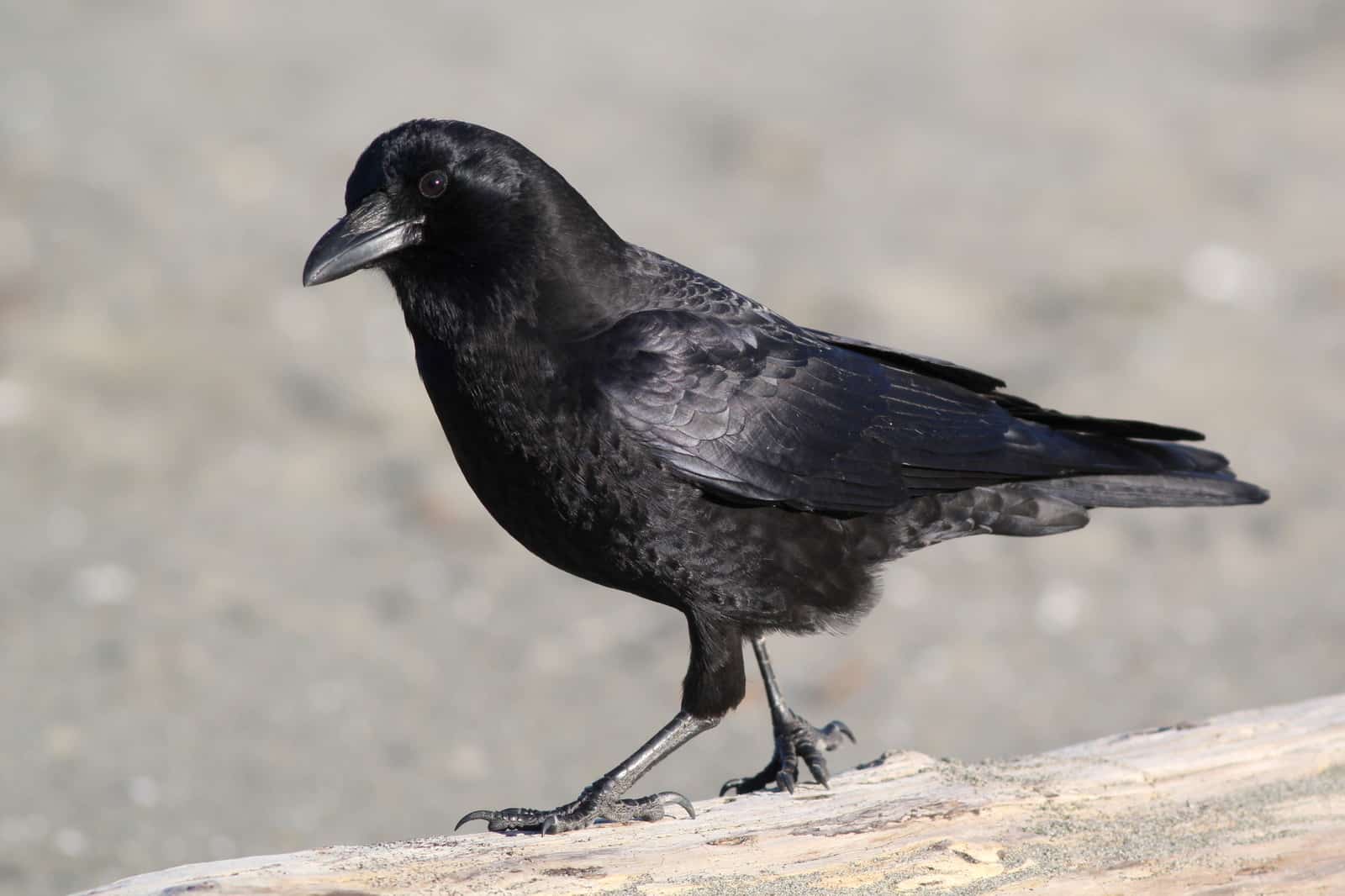
Birds
Starlings, cowbirds, grackles, blackbirds, and crows are voracious feeders.
Target plants: Berries and high sugar-level fruits.
Organic controls:
- Scare birds away with scarecrows, inflatable snakes, and plastic owls. Hang aluminum strips or foil or Mylar to flutter in the wind.
- Provide alternative food sources elsewhere away from edible crops.
- Large plants such as blueberries: Create a frame around the plants or place posts at the corner of the planting bed; drape netting with ¾ inch mesh over the frame. Secure the bottom of the netting.
- For small plants such as strawberries: Cover small plants with wire cages or stretch ¾-inch mesh netting over the plants.
- Grapes and tree fruits: Tie paper bags over-ripening fruit; cut the bottom corners of the bags to allow for air circulation. This method is not advised in very hot weather; the temperature inside the bag may cook the fruit.
- Vegetables: Place lightweight floating row covers over seedbeds and planting beds; secure the edges. If crows or other birds get through the row cover, place chicken wire cages over seedlings. Place shiny aluminum foil steamers around the garden.
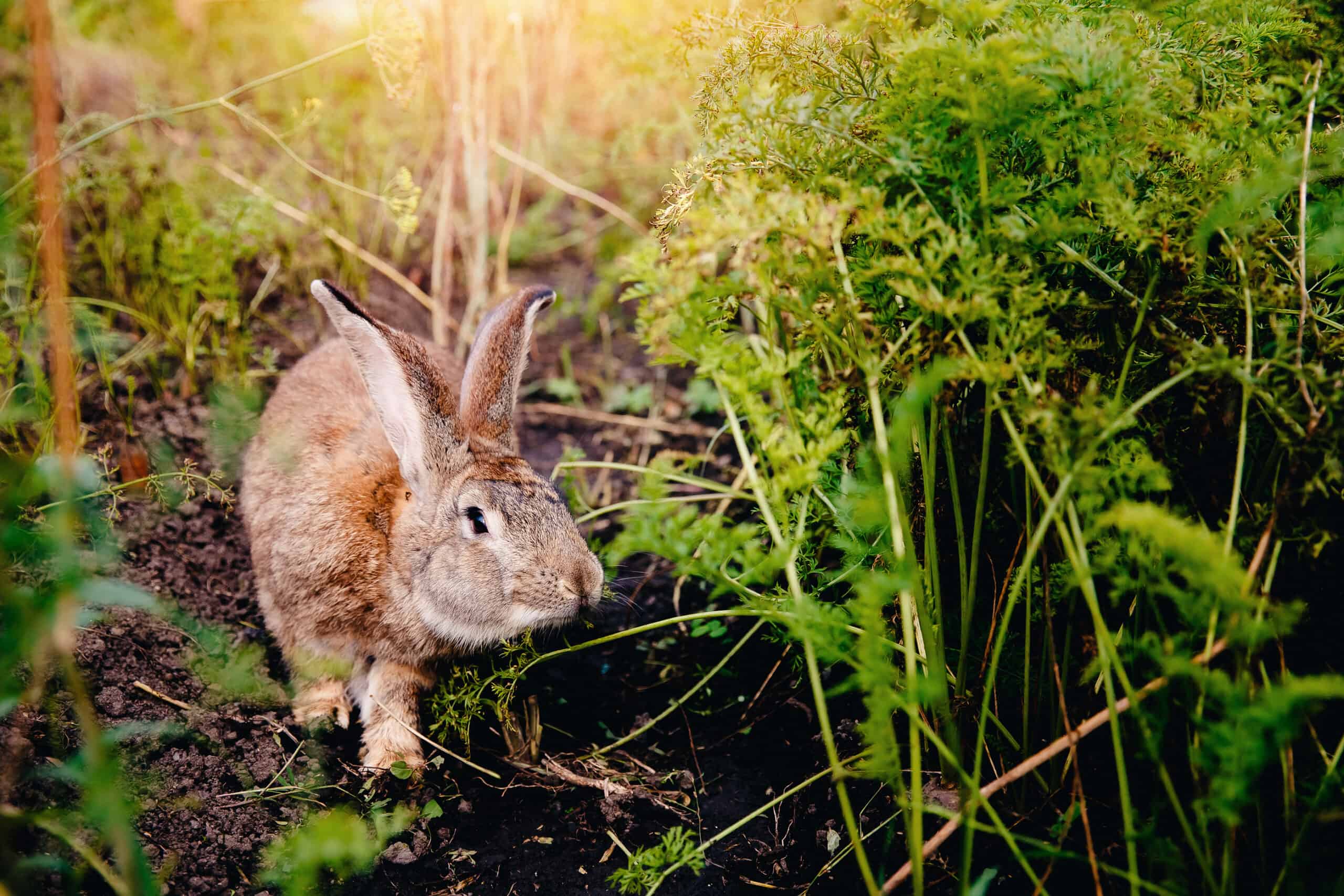
Rabbits
Target plants: Succulent plants and leaves with moderate to high water content.
Organic controls:
- Get rid of potential hiding places; tall grass, weeds, orchard clippings, and woodpile.
- Create a 24-inch fence around the periphery of the garden; use chicken wire or plastic-coated wire fencing with a 1×2-inch mesh. Rabbits can burrow; extend the mesh at least 6 inches underground.
- Use 36-inch-wide wire mesh and fold out the bottom 12 inches around the periphery; stake down the horizontal portion to make it more difficult to dig or burrow under.
- Place plastic milk jugs with the bottoms and tops cut off or tin cans with the bottom and top cut off around seedlings and young plants.
- Sprinkle powdered phosphate rock around the garden; this can also be sprinkled on plants.
- Sprinkle dried blood around the garden.
- Interplant onions between rows of other crops.
- Plant soybeans near the garden to distract rabbits from other crops.
- Sprinkle plants with red cayenne pepper.
- Mothballs may repel rabbits.
- Hang cheesecloth pouches filled with human or dog hair in the garden.
- Box traps can be used to capture and relocate rabbits.
- Place a cloth or heavy paper wrapping or a wire mesh cylinder around tree trunks to keep rabbits from gnawing on bark.
- Spray with a commercial or homemade repellant. Here is a homemade repellant: Mix 2 eggs, 2 cloves of garlic, 2 tablespoons of hot chile pepper; 2 tablespoons of ammonia, and 2 cups of hot water; let the mix sit for two days, then paint it on fences and wherever animal pests go.

Gophers, moles, and woodchucks
Target plants: Roots of succulent plants and underground vegetable parts; also entire plants that are pulled down into their burrows. Moles do not eat vegetables; they eat grubs in lawns and elsewhere. Their tunneling disrupts roots.
Organic controls:
- Try catch-and-release traps baited with nuts or peanut butter.
- Surround the garden with wire mesh or hardware cloth fence.
- Dig a trench around the garden to 2 feet deep and fill it with gravel, ashes, or crushed seashells.
- Dig the planting bed to a depth of 2 feet, line it with ½-inch mesh chicken wire, and replace the soil.
- Line individual planting holes with 1/2-inch wire-mesh baskets.
- Place one trap at each tunnel exit and entry hole. Use box traps or Maccabee traps. Dig down to the main horizontal runway, as deep as 18 inches, and place traps on each side of the digging hole. Bait the area with carrot tops or greens. Cover the hole with a board to block all light.
- Poison can be a danger to children, cats, and dogs. Place bait poison in the deep tunnels.
- Moles eat grubs in lawns; treat the lawn for grubs.
- Hang cheesecloth pouches filled with human or dog hair in the garden.
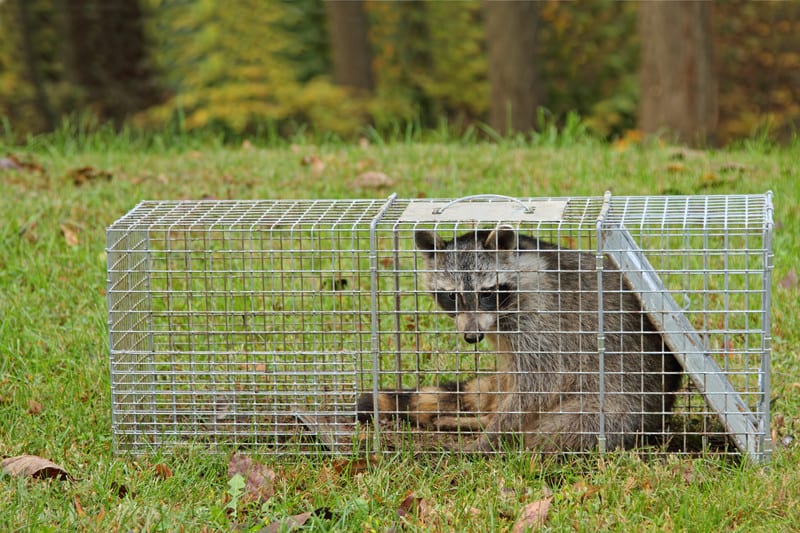
Raccoons
Target plants: Vegetables (especially corn), berries, and fruits; garbage; pest insects
Organic controls:
- Keep the garden and yard free of raccoon-attracting food.
- Secure the garbage can lid with a locking device. Place a bright light on the garbage-can area.
- Bring pet food in at night.
- Keep the compost pile turned so that it remains hot so that fruit and kitchen remainders are composted quickly. Never throw meat or fish on the compost pile.
- Live traps baited with bread and honey or marshmallows.
- Spray with a commercial or homemade repellant. Here is a homemade repellant: Mix 2 eggs, 2 cloves of garlic, 2 tablespoons of hot chile pepper; 2 tablespoons of ammonia, and 2 cups of hot water; let the mix sit for two days, then paint it on fences and wherever animal pests go.
- Put an electric fence around the garden.
- Cover corn ears with paper bags secured with tape. Sprinkle corn silks with hot pepper.

Deer
Target plants: Vegetable greens, fruit
Organic controls:
- Fencing at least 8 feet tall.
- Deer fencing: a fence 6 feet tall with a 3-foot-wide section across the top that is parallel to the ground (deer cannot jump both high and wide).
- Hang bars of strong-smelling deodorant soap around the garden.
- Hang cheesecloth pouches filled with human or dog hair in the garden.
- Place cotton clothes spring with baby powder in the garden.
- Plant castor oil plants in the garden (but castor oil is poisonous to humans and animals).
- Plant catnip, garlic, lavender, onions, spearmint, thyme, and yarrow around the garden; the smell is repellant.

Rats, mice, and voles
Target plants: Vegetables, fruits, garden debris, composted materials.
Organic controls:
- Mulch after the first frost; rodents will hide or burrow under mulch before the first frost.
- Keep the garden and yard free of debris including trash, leaves, firewood, newspapers, boxes, pipes, logs, and tree cuttings.
- Clean out and close off areas under steps and around foundations.
- Hang cheesecloth pouches filled with human or dog hair in the garden.
- Place snap traps on rodent runs; bait the traps with sunflowers or peanut butter.
- Spray with a commercial or homemade repellant. Here is a homemade repellant: Mix 2 eggs, 2 cloves of garlic, 2 tablespoons of hot chile pepper; 2 tablespoons of ammonia, and 2 cups of hot water; let the mix sit for two days, then paint it on fences and wherever animal pests go.
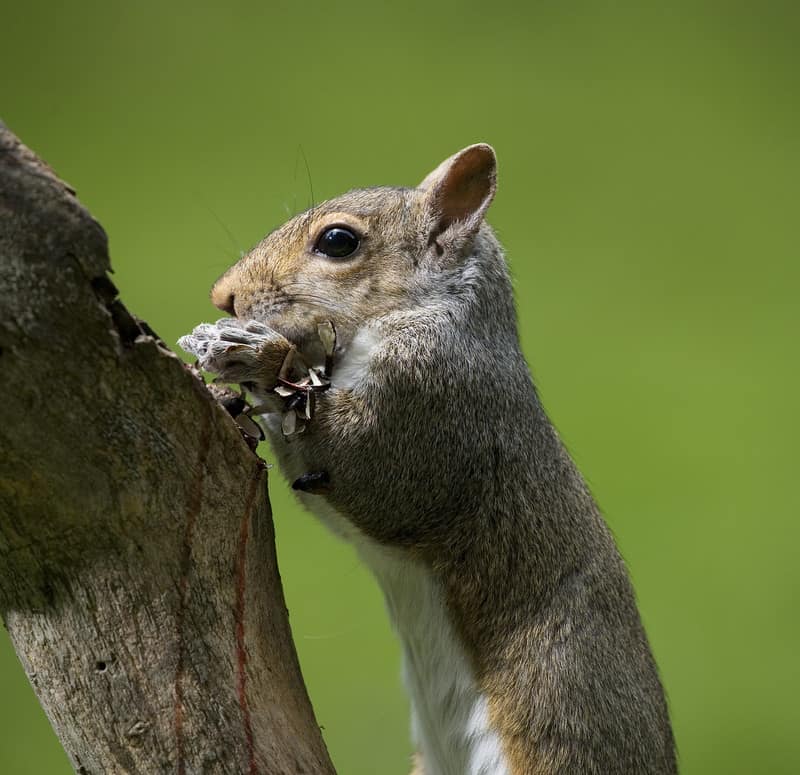
Ground squirrels
Target plants: Vegetables, roots, and tubers
Organic controls:
- Place live box traps outside burrows. Peanut butter is an effective bait. Release squirrels in an area where they will not do damage.
- Spray with a commercial or homemade repellant. Here is a homemade repellant: Mix 2 eggs, 2 cloves of garlic, 2 tablespoons of hot chile pepper; 2 tablespoons of ammonia, and 2 cups of hot water; let the mix sit for two days, then paint it on fences and wherever animal pests go.
Skunks
Target plants: Grubs in lawns, vegetables
Organic controls:
- Surround the garden with a 3-foot fence.
- Apply milky spore disease to the lawn to kill grubs.
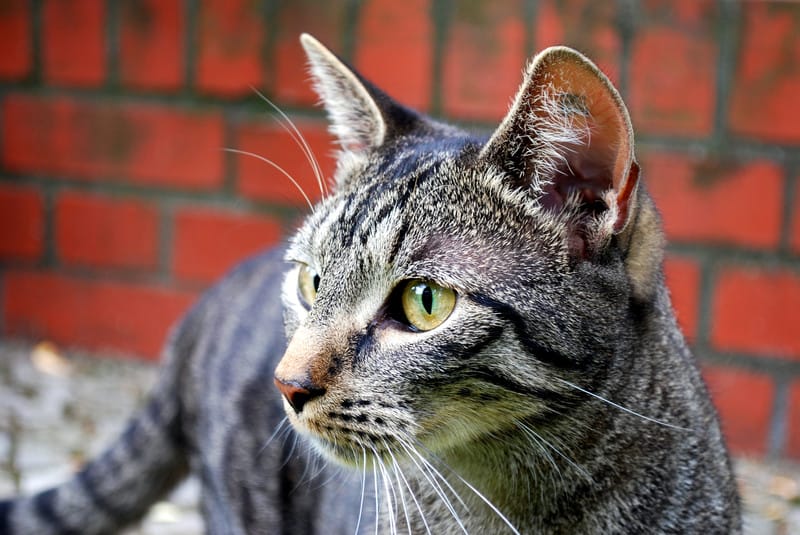
Cats and dogs
Organic controls:
- Fencing around planting beds.
- Spray with a commercial or homemade repellant. Here is a homemade repellant: Mix 2 eggs, 2 cloves of garlic, 2 tablespoons of hot chile pepper; 2 tablespoons of ammonia, and 2 cups of hot water; let the mix sit for two days, then paint it on fences and wherever animal pests go.
- Cats can be distracted by planting catnip in a separate part of the garden.
- Citrus peels can be placed near plants; the strong odor may repel cats and dogs.
Related articles:
Vegetable Garden Organic Weed Control
Vegetable Garden Organic Pest Control
Garden Planning Books at Amazon:
- Vegetable Garden Almanac & Planner
- Kitchen Garden Grower’s Guide Vegetable Encyclopedia
- Vegetable Garden Grower’s Guide
- Tomato Grower’s Answer Book















